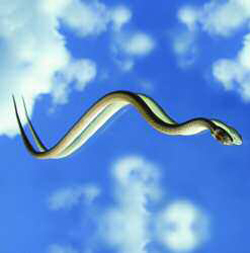
On the drive side it was barely passable but the killer there was that the system was not robust enough to make us comfortable deploying it in real world applications. As a result, we passed.
Cut to today. The quality of A/D and D/A conversion has reached analog proportions.
The signal chain is digital from the mic preamp to the amplifier input (beyerdynamic and Neumann are moving the digital threshold back to the microphone diaphragm).
Digital consoles have come to the fore. Transducers are still analog – everything else is digital.
The new Ethernet-type transport topologies that are surfacing are one of the last links in the digital chain.
The packet-based transmission method utilized by Ethernet requires that the data packets be reassembled in a buffer on the receiving end and then spooled out.
This has always been the stumbling block to using the technology in live sound. The companies that are building audio versions have found ways to reduce the latency created by this process and give us near-real time audio.
The nodal nature of these networks allows us to send and receive packets at multiple locations.
Now if you need a broadcast feed, a recording feed or inputs to a monitor console, you don’t have to deal with the analog interface demons.
Just hang a node off a CAT-5 (or now CAT- 6) cable (or a piece of fiber) and tell the packets to go there. In many instances the hubs and routers can be commercially available pieces similar to what is used in an office network.
So… where can we go with this? Imagine a world where your snake cable (CAT-6 or multimode fiber) can fit on a 1-foot diameter spool with room to spare and weighs 15 pounds.
The ends are RJ45 or ST connectors that can be bought at the local electronic supply store for a couple of bucks and terminated in two minutes flat. (In comparison, the power cord going to front-of-house is way bigger than the drive snake.)
Further, CAT-6 will be so cheap that if it’s been fouled by the beer garden patrons. you can just leave it. And we haven’t even started talking about WI-FI.
Might as well control the whole production on the same network with some software.
Revised set lists during the show when the singer starts losing his voice. Warnings about how badly we’re exceeding the SPL restrictions.
Oh well, time to go. I need to message the monitor engineer and tell him to get that ring out of the floor tom.
Editor’s Note: A herpetologist is someone who studies and provides information about reptiles and amphibians.
Bruce Main has been a systems engineer and FOH mixer for 28 years. He has also built, owned and operated recording studios and designed and installed sound systems.
